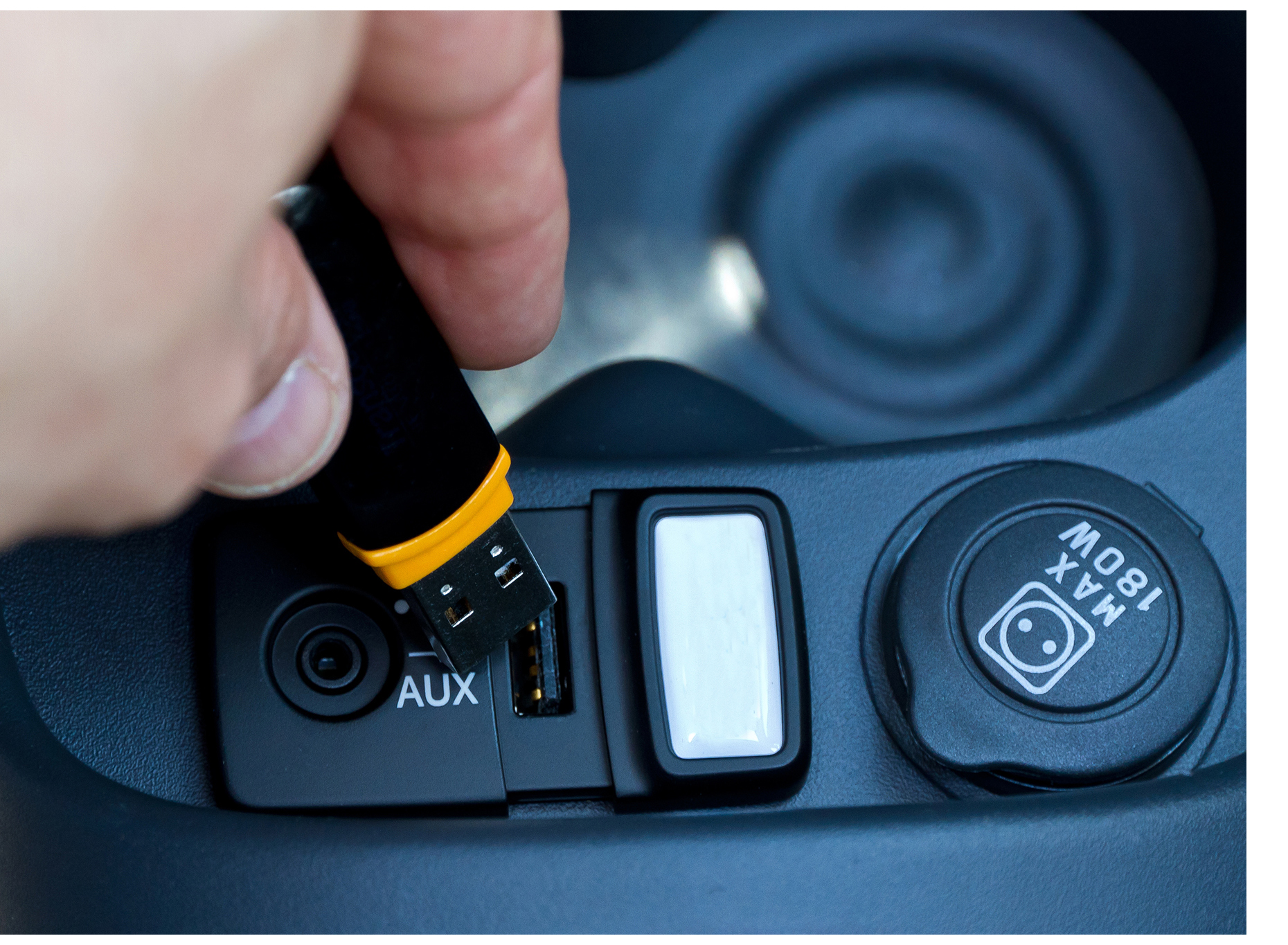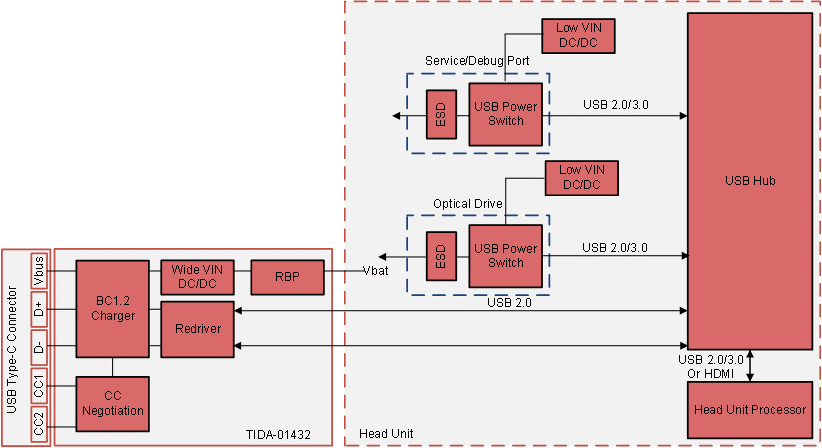SSZT839 december 2018
One of the most important factors fueling the automotive infotainment sector is the personal electronics industry. Smartphones, tablets and laptops are just a few of the gadgets that have inspired the design of automotive media interface systems. Trends in the personal electronics market can change so quickly that automakers and Tier-1 suppliers are on the defense to keep up with shorter design cycles than they are otherwise used to in the automotive world.

After the introduction of USB Type-C™ and USB Power Delivery standard for the personal electronics market in 2014, the automotive market had to adapt quickly. There has been a steady increase of USB unit shipments over the past several years – and the market is set for more growth in the years ahead. According to market research firm Strategy Analytics, there will be approximately 23 million USB ports shipped for automotive applications in 2017, growing to more than 25 million units in 2018, the first year automotive USB Type-C will debut in vehicles.
The growth of USBs in vehicles shouldn’t be surprising; consumers care about staying connected in their vehicles. The latest USB connector is the most versatile yet – USB Type-C is high powered (up to 100W), high speed (up to USB 3.1 data rates) and has flip-ability. It’s perfect for personal electronics – and now the automotive experience too.
The anticipated steep increase in automotive USB shipments means that many more areas in a vehicle will have USB ports. USB ports, which are designed into subsystems called media hubs, are usually found in remote places such as an armrest, in front of the gearshift, in glove compartments, or in a rear seat to provide power and data in more convenient locations of a vehicle. These media hubs usually connect to the head unit with a 1-3m cable and can be designed either as a passive or active hub. Which type is best for your infotainment system? Here’s the biggest difference: a passive hub is usually a remote port subsystem with no logic circuitry, while an active media hub uses a hub integrated circuit (IC) or microcontroller (MCU) to program features such as USB On-the-Go (OTG).
There are many benefits to designing a passive media hub instead of an active media hub, including mitigating redundancy and reduced time to market. The reason why it’s a better choice is because many head units already have an MCU or USB hub IC that can control USB OTG functionality. Forgoing an additional digital control on the subsystem reduces unnecessary redundancy. Additionally, jump-starting passive media hub subsystem designs with the help of easy-to-use reference designs makes them simpler and minimizes time to market.
Figure 1 shows a reference design that acts as a passive media hub system connected to the head unit. In the head unit, the USB hub IC takes care of the USB OTG functionality for popular applications such as Apple CarPlay or Android Auto. Active media hubs might have this USB hub IC integrated into the remote media hub subsystem.
This Automotive Passive Media Hub Reference Design with Charging and Enhanced Data Path Performance provides a unique approach for media ports that require data transfers. This reference design shown in Figure 1 provides a flexible, passive solution that allows the system to role swap with a head unit and to charge both USB Type-C and legacy devices with a small 1x2in solution. It can support USB 2.0 through a 15W USB Type-C port.
 Figure 1 Passive Media Hub System Block
Diagram
Figure 1 Passive Media Hub System Block
DiagramAs consumer demand for supplying power to personal electronics in vehicles continues to increase, so will the number of media hubs. While designing with USB Type-C can be challenging, using TI’s resources to kick-start passive media hub designs will help reduce design time and complexity.
Additional Resources
- Learn more about TI’s infotainment and cluster solutions.
- Read more about USB-Type C for automotive applications in the blog post, “One connector to rule them all, or is it?”
- Read more about power-management IC considerations for USB-Type C for automotive applications in the blog post, “Use a dual buck controller in automotive power systems.”